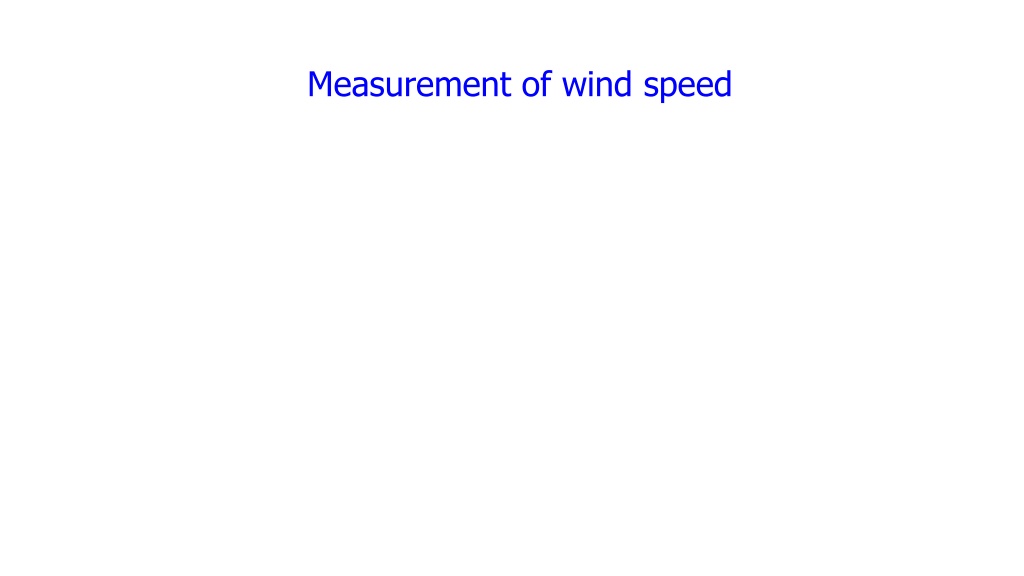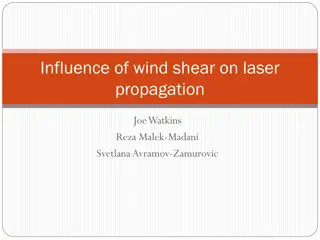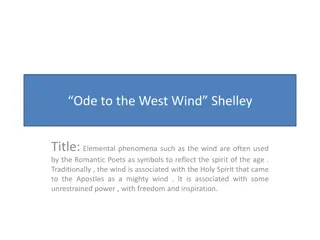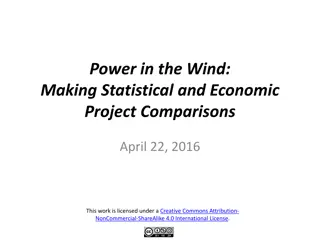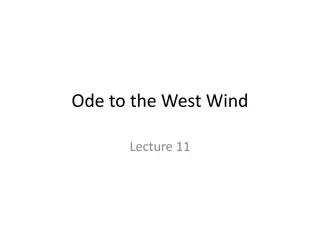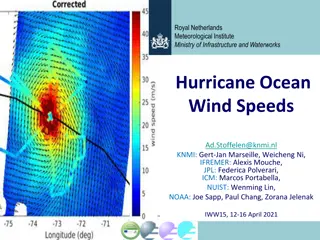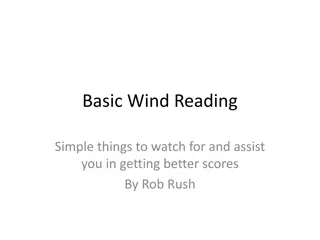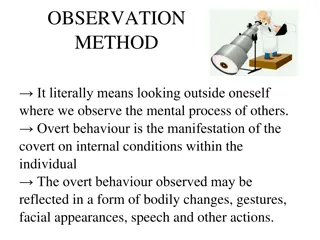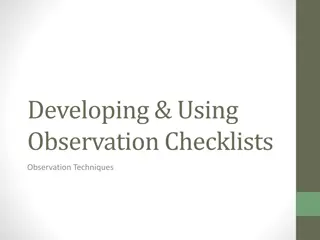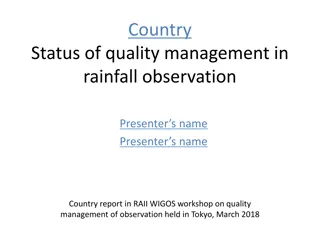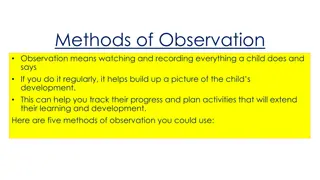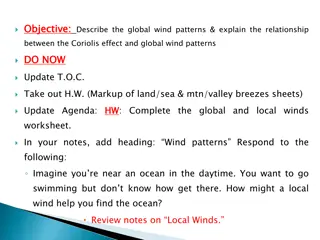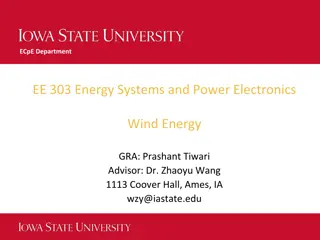Wind Measurement and Observation Techniques
Wind speed and direction are crucial parameters in meteorology. This article explores the measurement of wind speed using a Cup Counter Anemometer and the procedures for recording wind observations. It also delves into the methods for measuring wind direction. Understanding these techniques is essential for accurate weather forecasting and environmental monitoring.
Download Presentation

Please find below an Image/Link to download the presentation.
The content on the website is provided AS IS for your information and personal use only. It may not be sold, licensed, or shared on other websites without obtaining consent from the author. Download presentation by click this link. If you encounter any issues during the download, it is possible that the publisher has removed the file from their server.
E N D
Presentation Transcript
Wind is the air in horizontal motion caused due to difference in atmospheric pressure. Wind has to be specified by its direction and speed. The movement of wind is almost horizontal and its vertical component is very small, being about 1/100th. of the horizontal component. So by wind, we generally mean only the horizontal component of the wind.
Cup Counter Anemometer measures wind speed. This instrument consists of three hemispherical cups fixed at the end of metal arms from a central point. The cup is set in motion due to the pressure difference occurring between the two faces of the cup. The vertical spindle about which the cup rotate is connected to a mechanical counter through a gear system for which the number of rotations made by the cups in a chosen interval of time can be counted. The counter is directly calibrated in kilometres.
The anemometer gives wind run (WR). From wind run values at specific interval wind speed is calculated as follows. Wind Speed = (WR2 - WR1) / (T2 T1) The Anemometer reading at the 7 hours LMT of the previous day is subtracted from 7 hours LMT reading of the current day and divided by 24 so that mean daily wind speed in km/h can be obtained. Thus mean daily wind speed on a particular date corresponds to the 24- hour period ending at 0700 hours LMT of that date.
Procedures for recording wind observations Note the reading of the Anemometer as well as the time accurately. Note the final reading of the Anemometer after 3 minutes. Subtract the initial reading from the final reading and multiply by 20 to get the instantaneous wind speed at the time of observation in km/h. Subtract the Anemometer reading at 7 hrs. LMT of the previous day from that at 7 hrs. LMT of the observation date and divide the difference by 24. This will give the mean daily wind speed for the observation date.
Wind direction is measured with Wind Vane. It indicates the direction from which wind blows. One end exposes a broad surface to the wind, while the other end is narrow and points to the direction from which wind blows. The narrow end is in the form of an arrowhead. Under this movable system there are eight fixed rigid bars which are set to the eight cardinal directions-- North, Northeast, East, Southeast, South, Southwest, West and Northwest.
The arrow head of the wind vane points to the direction of wind and it is to be read from the wind vane to the nearest of the sixteen cardinals of the compass. The wind vane should be watched for a few minutes so that mean direction can be identified. If the narrow head is pointing towards the middle of the region between north (N) and northwest (NW), the direction should be read as north- northwest (NNW). If the arrowhead does not move at all due to absence of wind, the reading will be calm and this is to be entered in the Register.
Precautions for recording wind observations Make sure that the wind vane moves freely before taking the reading. During occasions of light wind when wind vane does not respond readily, give a slight turn to wind vane by hand and allow it to take up the direction of wind. In order to verify the direction given by the wind vane; compare the same with the appropriate direction determined either by facing the direction of wind or by letting of small bits of paper.
Preparation of Wind Rose A wind rose presented in a circular format, gives a very concise information on how wind speed and direction are distributed at a particular location. The length of each "spoke" around the circle is related to the frequency of time that the wind blows from a particular direction. Each concentric circle represents a different frequency, emanating from zero at the center to increasing frequencies at the outer circles. All wind roses use 16 cardinal directions, such as north (N), NNE, NE, etc.
It is the wind rose for Chennai. The wind roses shown here contain additional information, in that each spoke is broken down into discrete frequency categories that show the percentage of time that winds blow from a particular direction and at certain speed ranges.
